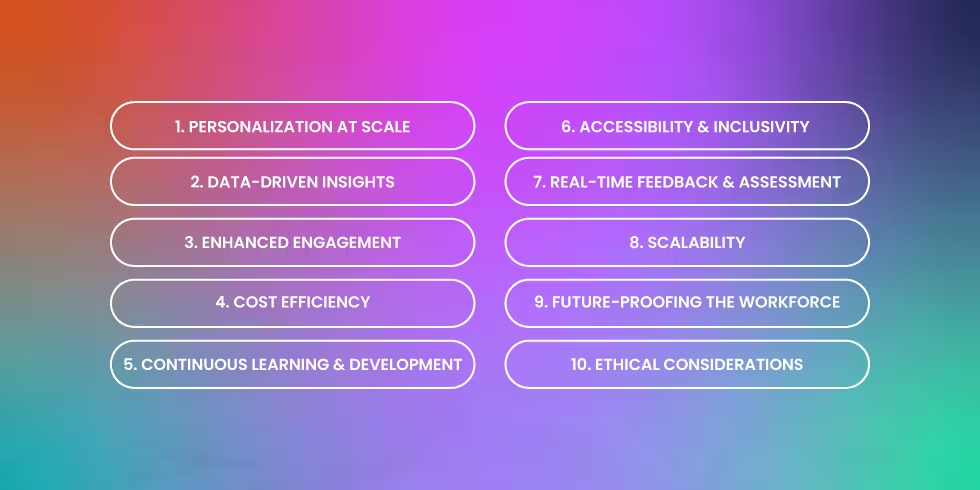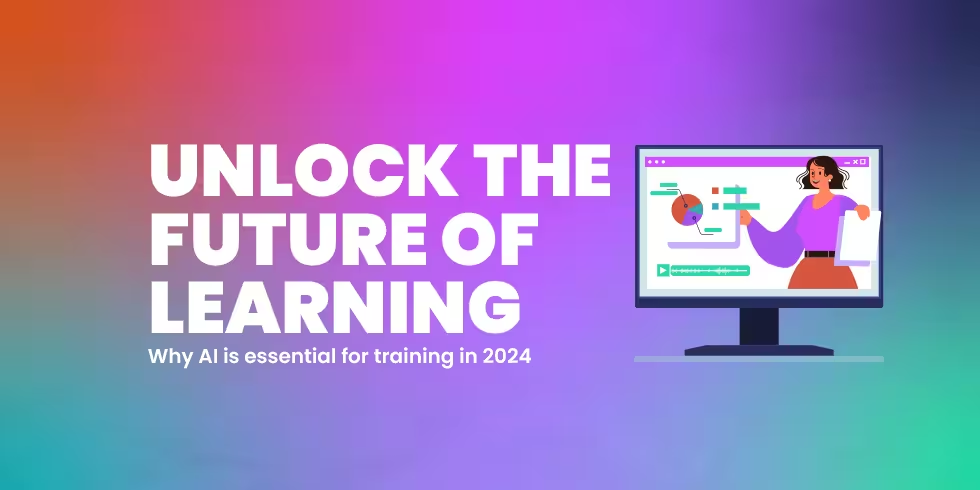In the ever-evolving landscape of professional development, 2024 is shaping up to be a transformative year. As organizations seek innovative ways to enhance learning and development, artificial intelligence (AI) is emerging as a critical component. The integration of AI for training and development is not merely a trend but a fundamental shift that promises to revolutionize how employees learn and grow.
This article explores why AI is essential for training in 2024 and how it is set to unlock the future of learning.

Personalization at Scale
One of the most significant advantages of AI for training and development is its ability to provide personalized learning experiences at scale.
Traditional training programs often adopt a one-size-fits-all approach, which can be inefficient and ineffective. AI, however, can analyze individual learning styles, preferences, and progress to tailor training programs that meet specific needs. This personalized approach ensures that employees receive the right content at the right time, enhancing engagement and retention.
Data-Driven Insights
AI-driven analytics offer unprecedented insights into the effectiveness of training programs.
By collecting and analyzing vast amounts of data, AI can identify patterns and trends that would be impossible to detect manually. These insights allow organizations to fine-tune their training strategies, ensuring that resources are invested in the most impactful areas. Moreover, AI can predict future learning needs, enabling proactive development plans that align with organizational goals.
Enhanced Engagement
Keeping learners engaged is a perennial challenge in training and development.
AI can address this issue by incorporating interactive and adaptive learning elements. For example, AI-powered chatbots can provide instant feedback and support, creating a more dynamic and responsive learning environment. Additionally, gamification elements, powered by AI, can make learning more enjoyable and motivating, leading to higher completion rates and better outcomes.
Cost Efficiency
Implementing AI for training and development can also lead to significant cost savings.
Traditional training methods often require substantial investments in materials, travel, and instructor fees. AI, on the other hand, can automate many aspects of the training process, reducing the need for physical resources and human intervention. This automation not only cuts costs but also frees up valuable time for HR and training professionals to focus on strategic initiatives.
Continuous Learning and Development
In today’s fast-paced business environment, continuous learning is crucial.
AI facilitates this by providing ongoing learning opportunities that adapt to changing needs and technologies. For instance, AI can recommend new courses based on an employee’s career progression and emerging industry trends. This continuous learning model ensures that employees remain up-to-date with the latest skills and knowledge, fostering a culture of lifelong learning.
Accessibility and Inclusivity
AI has the potential to make training and development more accessible and inclusive.
By leveraging AI, organizations can create training programs that accommodate diverse learning needs, including those of employees with disabilities. For example, AI-powered tools can offer real-time translations, voice-to-text capabilities, and other assistive technologies that enhance accessibility. This inclusivity not only benefits employees but also helps organizations build a more diverse and capable workforce.
Real-Time Feedback and Assessment
One key benefit of AI in training and development is the ability to provide real-time feedback and assessment.
AI can monitor learners’ progress and performance in real time, offering immediate feedback that helps learners correct mistakes and improve their skills. This instant feedback loop is far more effective than traditional assessment methods, which often involve delays and lack the granularity needed for effective learning.
Scalability
As organizations grow, their training needs become more complex and expansive.
AI offers a scalable solution that can easily adapt to an organization’s growing needs. Whether training a small team or a global workforce, AI can scale up or down without compromising the quality of the training experience. This scalability ensures that training programs remain effective and efficient, regardless of the organization’s size.
Future-Proofing the Workforce
The rapid pace of technological advancement means that skills can quickly become obsolete.
AI helps future-proof the workforce by continuously identifying skill gaps and providing targeted training to address them. This proactive approach ensures that employees are always equipped with the latest skills and knowledge, keeping the organization competitive in an ever-changing market.
Ethical Considerations
While the benefits of AI for training and development are clear, ethical considerations must be addressed.
Organizations must ensure that AI systems are transparent, fair, and unbiased. This involves regular audits and updates to AI algorithms to prevent discrimination and ensure that all employees have equal opportunities for learning and development.
Conclusion

In conclusion, integrating AI for training and development is not just a futuristic concept but a present reality that is transforming the way organizations approach learning. From personalized learning experiences to cost efficiency and scalability, AI offers numerous advantages that make it essential for training in 2024.
As we move forward, embracing AI will be key to unlocking the future of learning and ensuring that organizations and their employees remain competitive and adaptable in a rapidly changing world. The future of learning is here, and it is powered by CourseAI.
Signup for CourseAI and transform your training today!

